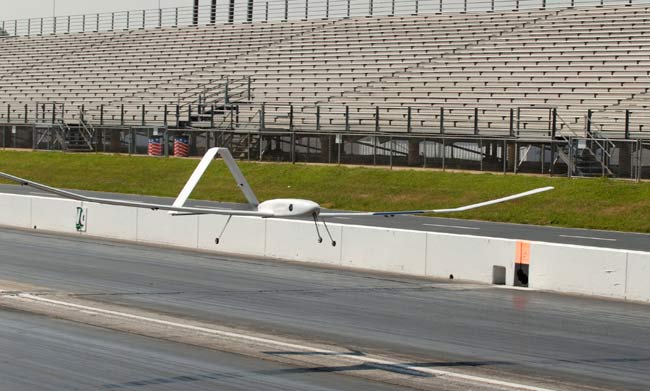Plane Flies on Power of Five Light Bulbs

One of the largest unmanned aircraft to rely solely on compressed hydrogen fuel has flown successfully during tests.
The plane, with a 22-foot-wingspan, is powered by a fuel-cell system that generates 500-watts—equal to five bright light bulbs.
“That raises a lot of eyebrows,” said Adam Broughton, a research engineer at the Georgia Institute of Technology's Aerospace Systems Design Laboratory. “Five hundred watts is plenty of power for a light bulb, but not for the propulsion system of an aircraft this size.”
The design and geometry of the aircraft [Photo] and the controlling subsystem technology allowed the feat.
Broughton and his colleagues used creative ways to get rid of extra weight on the aircraft, as well as reducing drag. The researchers also miniaturized the components of the aircraft to fit within a smaller framework. For example, they borrowed a hydrogen tank from a paintball gun.
The plane flew as high as 12 feet and stayed airborne for up to a minute at a time.
Fuel cells create electrical current by converting hydrogen and oxygen into water. The advantage of this technology is that it's pollution-free. These fuel cells, however, don't produce enough power for the propulsion of larger aircrafts. But they may provide an alternative for smaller and slower vehicles such as the unmanned aerial vehicles (UAV).
Get the world’s most fascinating discoveries delivered straight to your inbox.
"We're saying to the world that this is a viable power solution," Broughton said.
UAVs provide a potentially low cost alternative to satellites and could be used to track hurricanes, patrol borders and do military reconnaissance.
The researchers will present details of the project at the Society of Automotive Engineers’ Power System Conference in New Orleans in November.



